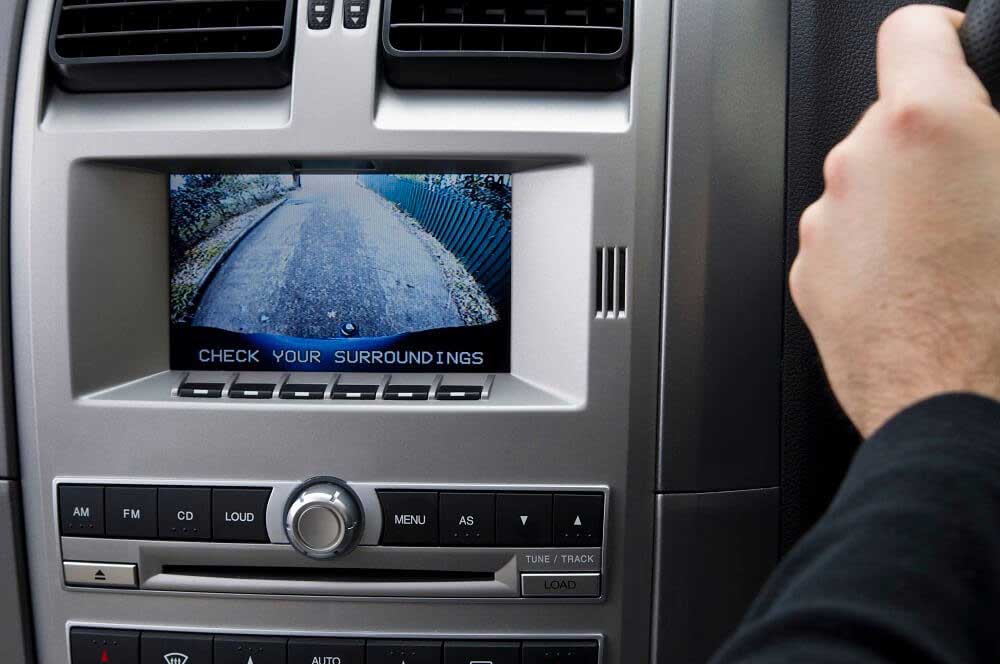Are reverse cameras worth it?

Many cars have limited rear visibility, so installing a reversing camera makes a lot of sense – the cameras improve visibility, make parking manoeuvres easier and can prevent accidents.
While the addition of a camera does not mean drivers can stop looking in their mirrors, the extra vision they provide can alert them to potential risks in their blind spots.
Should I get a reversing camera?
Many cars are fitted with reversing cameras as standard equipment. The cameras provide a visual image of the area directly behind the vehicle and assist with eliminating potential blind spots.
Reversing cameras are recommended for most vehicles, as accidents caused by reversing are common and even a minor bump can lead to a hefty repair bill or a tragic outcome. In Australia, a child is run over by a vehicle in a driveway each week.
How do reversing cameras operate?
Reversing cameras consist of two main parts – a camera attached to the rear of the vehicle and a monitor for viewing.
When reverse gear is selected, the camera system is activated to enable the driver to see what is behind the vehicle.
Types of reversing cameras
There are a range of reversing cameras available with options for both DIY kits and professionally installed systems.
Wireless reverse camera kits:
Popular with DIY enthusiasts, these units are simple to install. Unfortunately, as the unit runs on wireless signals, the image quality can be reduced and affected by signal dropouts.
Rear view mirror systems:
This system replaces the rear-view mirror with one that has an integrated screen to show vision from the camera. Some users may find the small size of the screen difficult to use.
Mountable screen systems:
Usually mounted on the dash or sun visor, these systems are popular with motorists who prefer larger screen sizes. Be careful when choosing and installing this type of unit as it can be difficult to find a suitable mounting location and the size of the screen could impede the driver's vision or access to vehicle controls.
Integrated units:
Factory installed systems are usually incorporated into the entertainment or navigation system, with the screen mounted in the dash or console. Some original equipment systems that don't have a reversing camera have provision for one, but if they don't, there are options for replacing the entire system with one that has the latest features, including a reversing camera. Professional installation is usually required.
Other options:
Reversing Sensors:
Reversing sensors are fitted to the rear of the car to alert the driver to objects in its path and often provide different warning tones to indicate the distance to an object to aid with parking.
RACQ Principal Technical Researcher Russell Manning said reversing sensors were a common feature of newer cars and, like reversing cameras, were readily available from aftermarket suppliers.
“A combination of a reversing camera and sensors will provide the best outcome,” Mr Manning said.
Reverse warning alerts
Reverse warning systems provide an audible warning to alert pedestrians that the vehicle is reversing. They are a common accessory in commercial vehicles and can be easily fitted to the average car. Be aware that younger children may not understand the meaning of the warning.
Related topics
Things to note
The information in this article has been prepared for general information purposes only and is not intended as legal advice or specific advice to any particular person. Any advice contained in the document is general advice, not intended as legal advice or professional advice and does not take into account any person’s particular circumstances. Before acting on anything based on this advice you should consider its appropriateness to you, having regard to your objectives and needs.
Insurance Products (excluding Travel Insurance) are issued by RACQ Insurance Limited ABN 50 009 704 152 (RACQI) and arranged by its agent, RACQ Distribution Services Pty Ltd (RDS) ABN 35 116 361 650, AFSL 567130 and RDS' authorised representatives (including RACQ Operations Pty Ltd ABN 80 009 663 414, AR No. 234978 (RACQO). Conditions, limits and exclusions apply. RDS and RACQO are in the RACQ group of companies. One of the companies in the RACQ group of companies has a minority shareholding in RACQI.
RDS and RACQO have not taken your personal objectives, circumstances or needs into account when preparing advice regarding insurance products and you will need to consider whether the advice is appropriate for you. Read the Product Disclosure Statement (PDS) and any applicable Supplementary PDS before making a purchase decision on this product. You can also access our Target Market Determinations on this website. RDS receives a commission from RACQI for the policies it arranges. RACQO receives fees paid for services it provides to RDS. Further details about remuneration are available on request prior to purchasing.
Banking and loan products issued by Members Banking Group Limited ABN 83 087 651 054 AFSL/Australian credit licence 241195 trading as RACQ Bank. Terms, conditions, fees, charges and lending policies apply. This is general advice only and may not be right for you. This information does not take your personal objectives, circumstances or needs into account. Read the disclosure documents for your selected product or service, including the Financial Services Guide and the Terms and Conditions, and consider if appropriate for you before deciding.
Except for RACQ Bank, any RACQ entity referred to on this page is not an authorised deposit-taking institution for the purposes of the Banking Act 1959 (Cth). That entity’s obligations do not represent deposits or other liabilities of RACQ Bank. RACQ Bank does not guarantee or otherwise provide assurance in respect of the obligations of that entity, unless noted otherwise.
RACQ Bank subscribes to the Customer Owned Banking Code of Practice which establishes higher standards than the law requires. The Code reflects modern consumer expectations and developments in approaches to issues such as consumer vulnerability, guarantors, and supporting customers through financial hardship. Please read our Customer Owned Banking Code of Practice page for more information.
RACQ Operations Pty Ltd (ABN 80 009 663 414 AR 000234978) and Members Travel Group Pty Ltd (ABN 45 144 538 803 AR 000432492) are acting as an Authorised Representative of the issuer of the insurance, Tokio Marine & Nichido Fire Insurance Co., Ltd. (ABN 80 000 438 291 AFSL 246 548). Any advice set out above is general in nature only, and does not take into account your objectives, financial situation or needs. Before purchasing any travel products, please consider the RACQ Travel Insurance Product Disclosure Statement (PDS) and the Target Market Determinations (TMDs) that apply to these products. Whilst the PDS outlines the Terms and Conditions of these products, the TMDs outline the intended class of customers that comprise the target market for these travel products. This will allow you to consider which products best suit your objectives, financial situation and needs and consider the products appropriateness to your personal circumstances. TMDs also outline matters involving the distribution and the review of these products. The PDS, Supplementary PDS and TMDs for each travel product can be found here.
